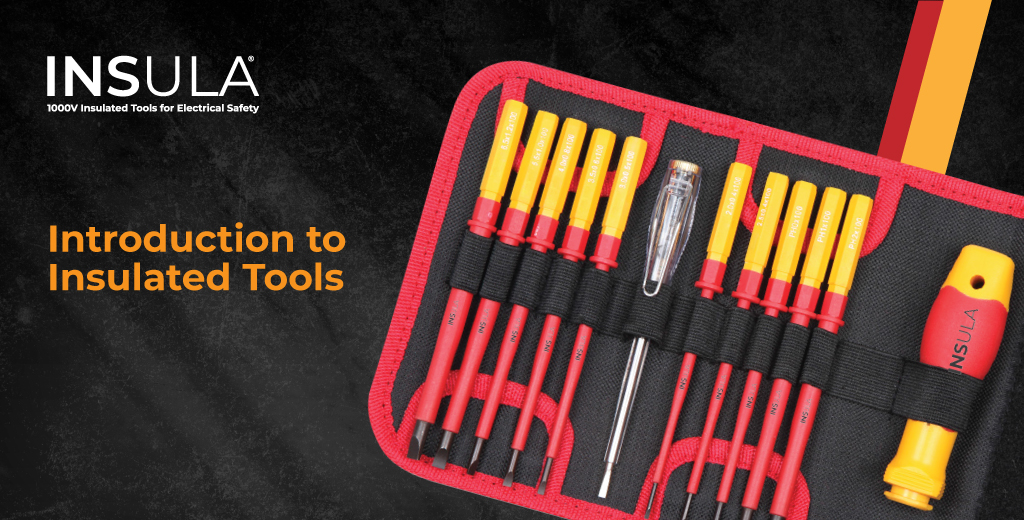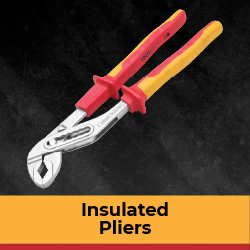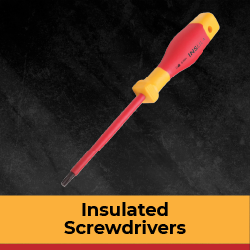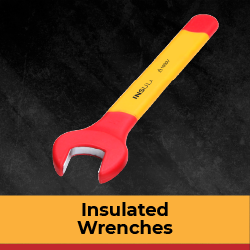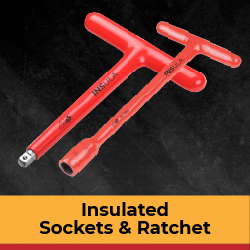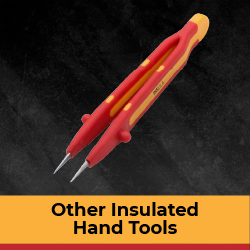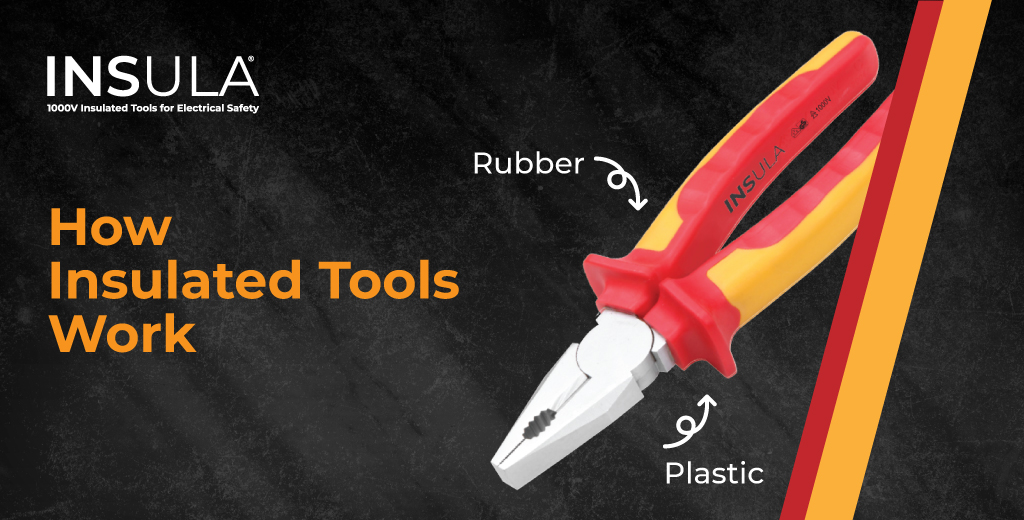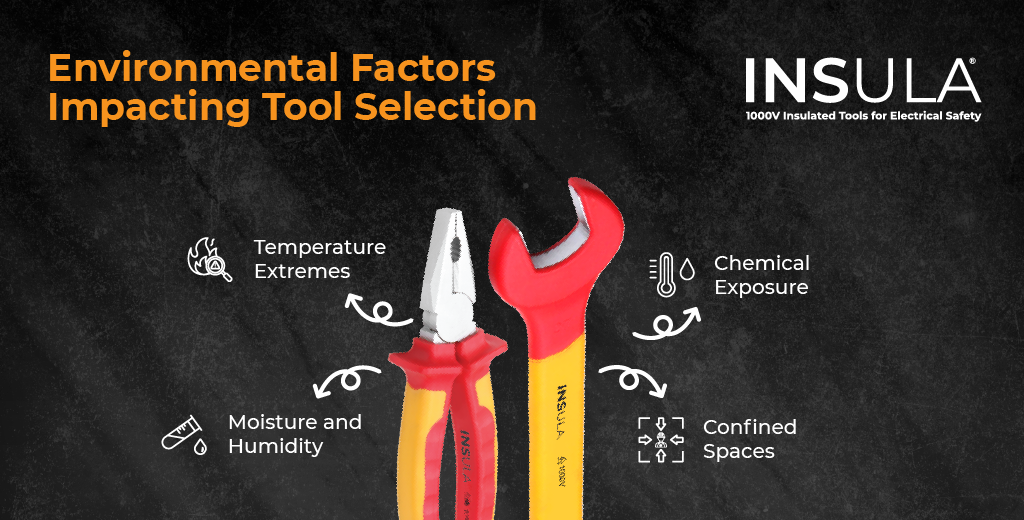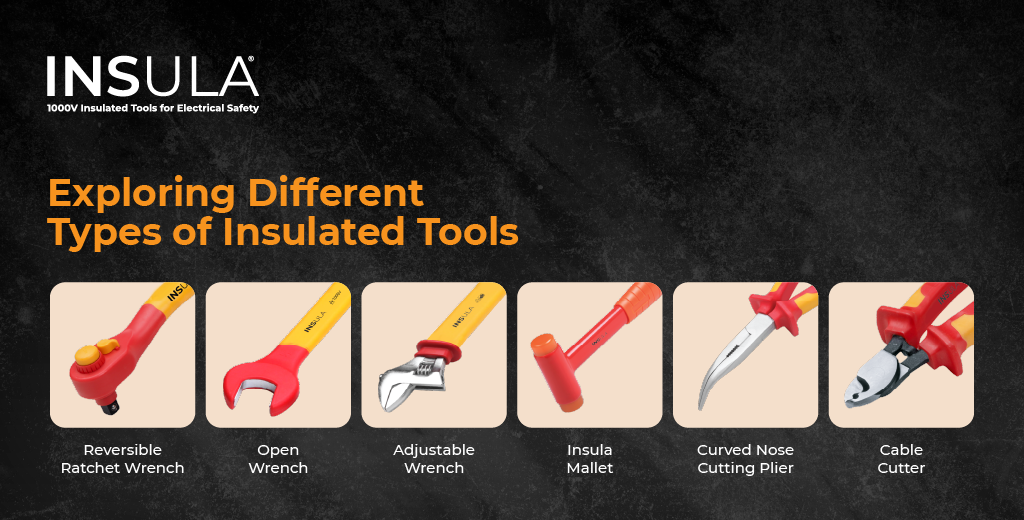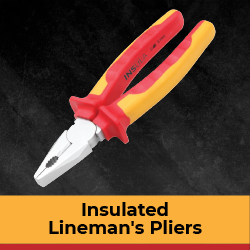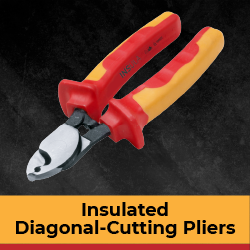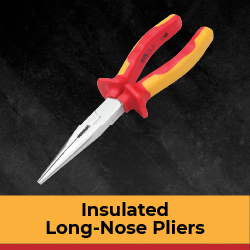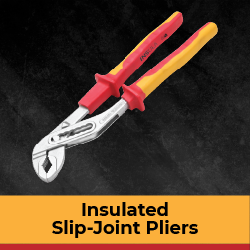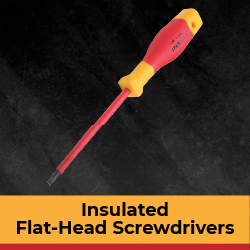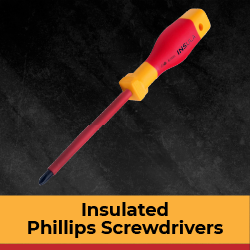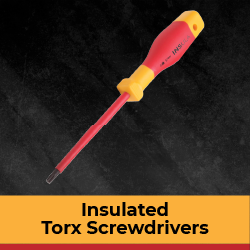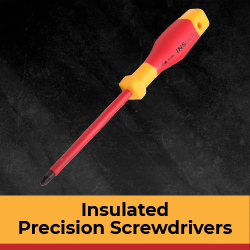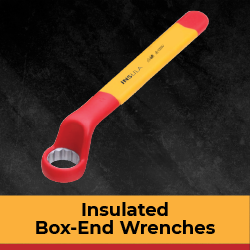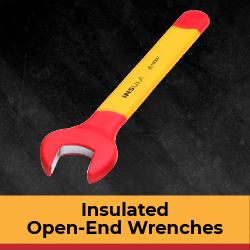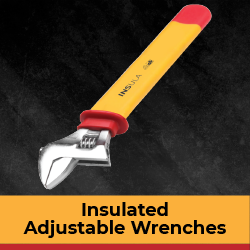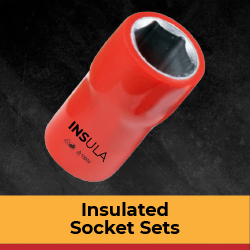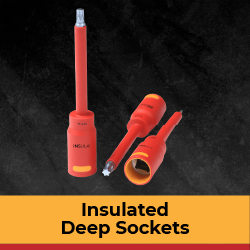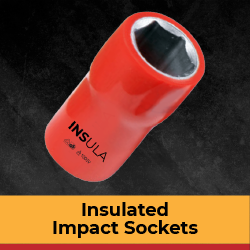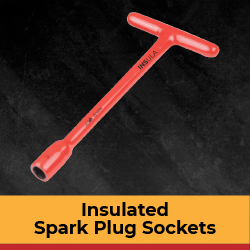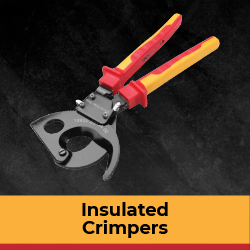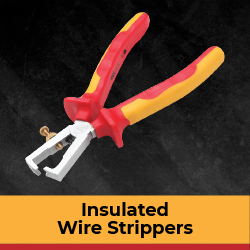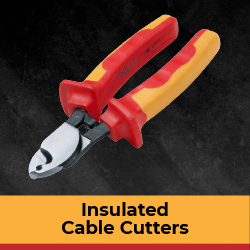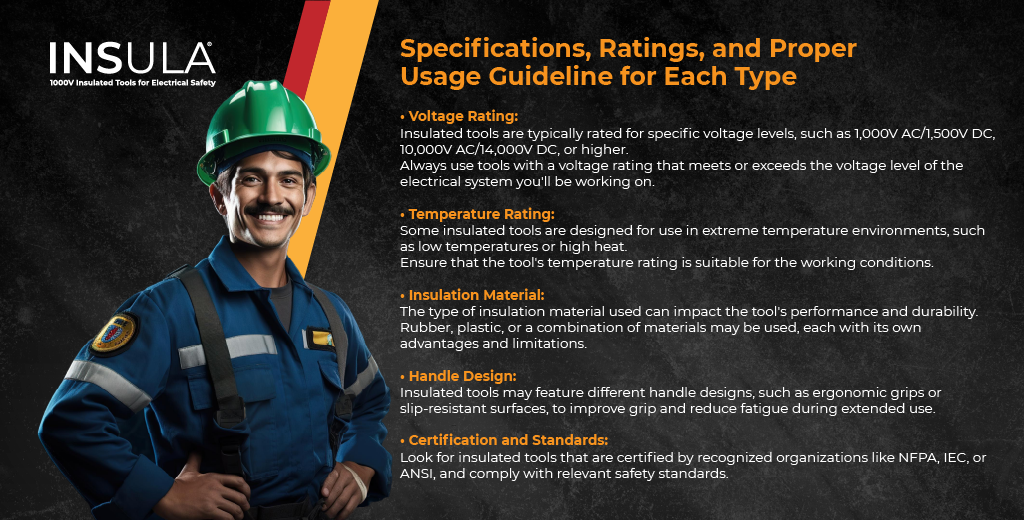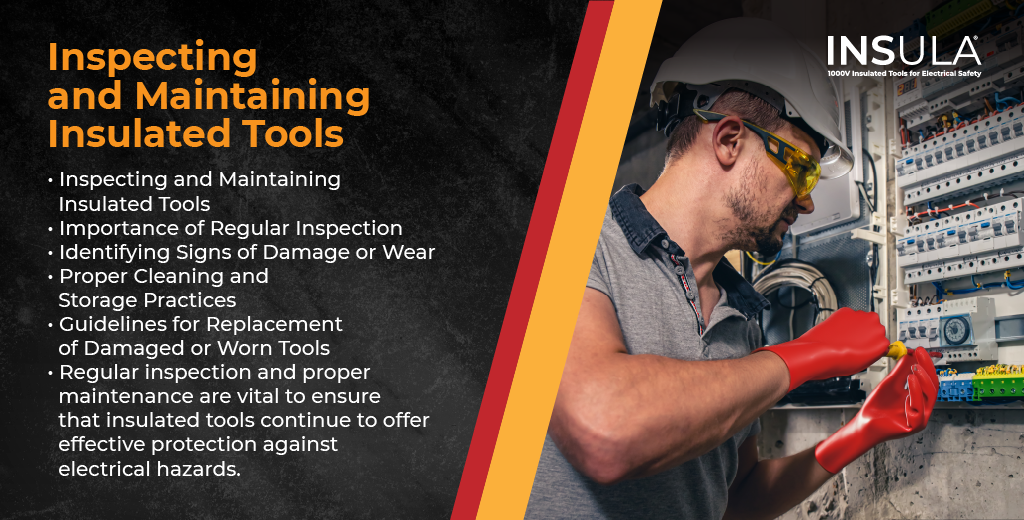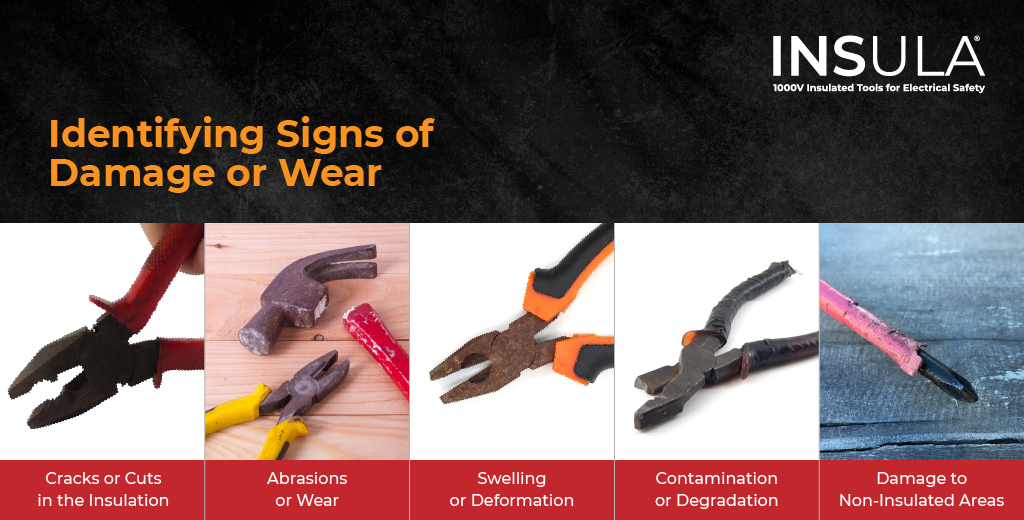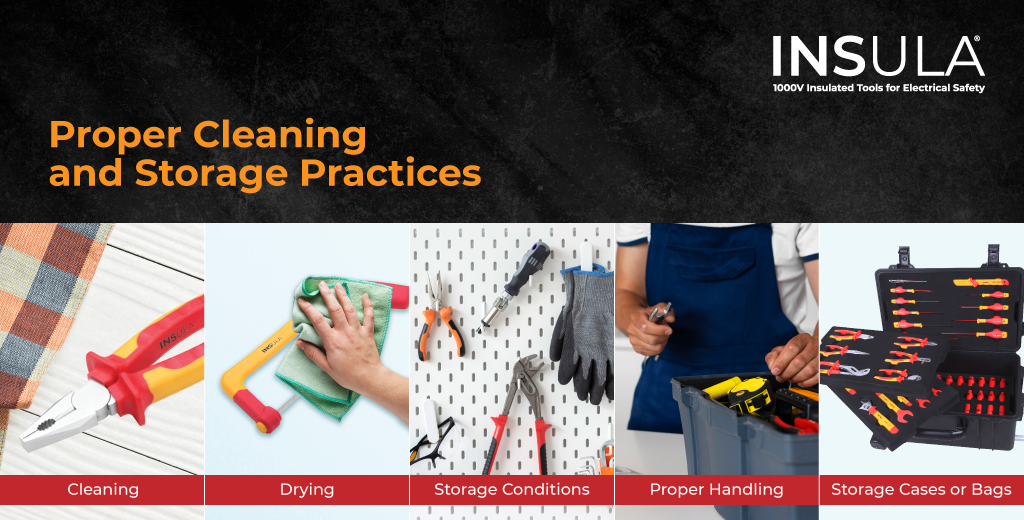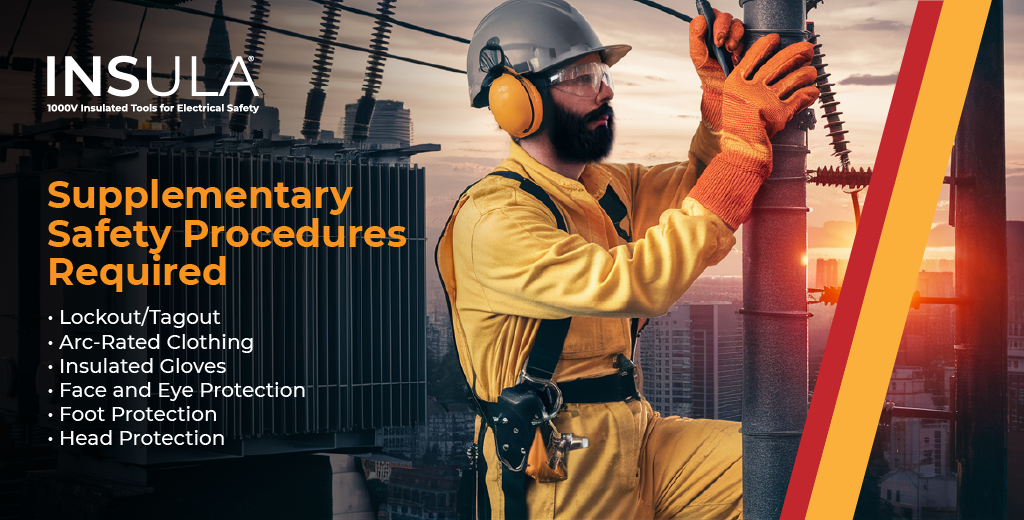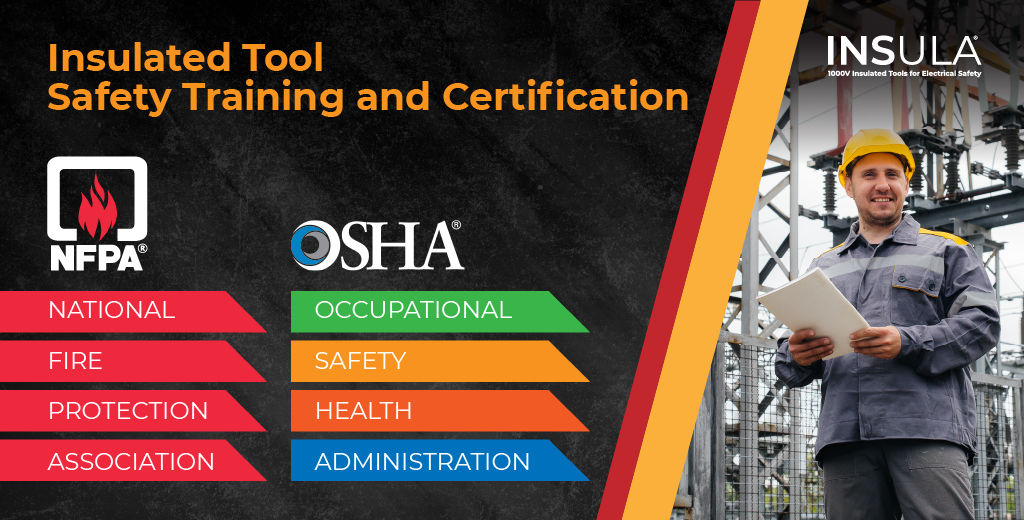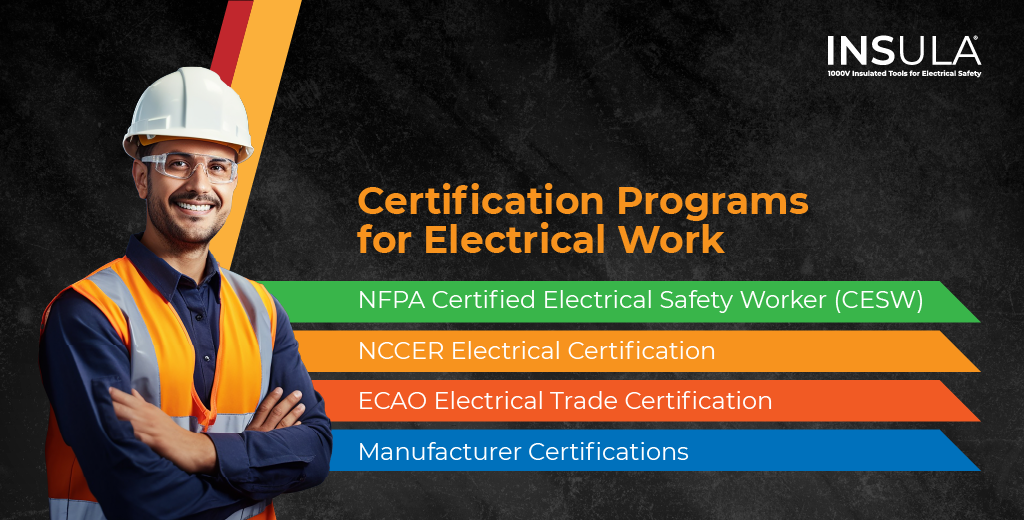
Insulated Tools: The Definitive Guide to Electrical Safety
I. Introduction to Insulated Tools
A. Definition and Purpose of Insulated Tools
Insulated tools are specialized hand tools designed to protect users from electrical shocks and burns when working with or around live electrical circuits, components, and systems. These tools feature a non-conductive insulating material, typically made of rubber, plastic, or a combination of both, applied to the tool's working surfaces and gripping areas.
The primary purpose of insulated tools is to provide an additional layer of safety for electricians, electrical engineers, maintenance technicians, and other professionals who work with energized electrical equipment. By creating a barrier between the user and the live electrical source, insulated tools minimize the risk of electrical current traveling through the tool and into the user's body, which could result in severe injuries or even fatalities.
B. Importance of Insulated Tools in Electrical Work Safety
Electrical work inherently carries significant risks due to the presence of high voltages and currents. Even seemingly minor mistakes or accidents can have devastating consequences, including burns, electrocution, or arc flash incidents. Insulated tools play a crucial role in mitigating these risks and ensuring the safety of electrical workers.
According to the Electrical Safety Foundation International (ESFI), electrical hazards cause hundreds of fatalities and thousands of injuries each year in the United States alone. This is despite the high level of awareness of safe practices. In other countries such as India where safety practices are still sub-par (but catching up), the fatalities are much more pervasive. Proper use of insulated tools, combined with other safety measures like personal protective equipment (PPE) and adherence to safety protocols, can significantly reduce the likelihood of these incidents occurring.
C. Main Types of Insulated Tools: Pliers, Screwdrivers, Wrenches, etc.
Insulated tools come in various forms, with some of the most common types being:
Insulated Pliers: These include lineman's pliers, diagonal-cutting pliers, long-nose pliers, and more, designed for gripping, cutting, and manipulating electrical components.
Insulated Screwdrivers: Available in flat-head, Phillips, Torx, and other tip styles, insulated screwdrivers are essential for tightening and loosening electrical connections.
Insulated Wrenches: Encompassing box-end, open-end, and combination wrenches, these tools are used for tightening and loosening nuts and bolts on electrical equipment.
Insulated Sockets & Ratchet: Sockets of various square drives (¼”, ½”) along with the various accessories such as ratchet, T-Handle, extensions
Other Insulated Hand Tools: Depending on the job requirements, electricians may also use insulated sockets, aviation snips, crimpers, and other specialty tools.
While insulated tools provide an additional safeguard, it's important to note that they are not a substitute for proper safety practices and personal protective equipment. They should always be used in conjunction with other relevant safety measures.
II. How Insulated Tools Work
A. Explanation of Insulation Materials Used: Rubber, Plastic, etc.
The key to insulated tools' ability to protect users from electrical hazards lies in the insulating materials used to cover the tool's conductive surfaces. These materials act as a barrier, preventing the flow of electrical current from the live source to the user's body.
Two of the most common insulating materials used in insulated tools are:
- Rubber: Natural or synthetic rubbers, such as nitrile or neoprene, are widely used for their excellent insulating properties, durability, and resistance to heat and chemicals. The rubber coating is applied over the tool's metal surfaces, creating a non-conductive layer.
- Plastic: Various types of plastics, including thermoplastics and thermosets, are also employed in insulated tool manufacturing. Common plastics used include polyvinyl chloride (PVC), polypropylene, and glass-reinforced plastics. These materials offer good insulation properties and can be molded into various tool shapes and configurations.
In addition to these primary insulating materials, some insulated tools may incorporate other materials or coatings to enhance their performance or durability. For example, some tools may have additional layers of insulation or protective coatings to improve chemical resistance or prevent wear and tear.
B. Mechanism of Insulation in Preventing Electrical Shocks and Burns
The insulating materials used in these tools work by effectively blocking the flow of electrical current from the live source to the user's body. Rubber and plastic are excellent insulators because they have high electrical resistance, meaning they do not allow the free movement of electrons, which is necessary for electrical current to flow.
When an insulated tool comes into contact with a live electrical source, the insulating material acts as a barrier, preventing the electrical current from traveling through the tool and into the user's hand or body. This mechanism effectively breaks the electrical circuit, protecting the user from potentially lethal electrical shocks or burns.
Additionally, there are specific design considerations made for insulated tools which are necessary and hence required by the various standards to enhance safety. For example pliers have special jackets installed on the handle to prevent the user's hands from touching the exposed head. Screwdrivers have specially designed insulating layers covering the entire blade (except the tip). While approved insulated tools look very similar to regular tools there are subtle changes in their design.
C. Understanding Ratings and Voltage Protection Levels
Insulated tools are assigned voltage ratings that indicate the maximum voltage level at which they can effectively protect users from electrical hazards. These ratings are determined through extensive testing and certification processes by organizations like the International Electrotechnical Commission (IEC) and the American National Standards Institute (ANSI).
Common voltage ratings for insulation include:
- 1,000V AC or 1,500V DC: Suitable for most residential and light commercial electrical work.
- 10,000V AC or 14,000V DC: Designed for higher-voltage applications, such as industrial or utility work.
- 20,000V AC or 28,000V DC: Used in high-voltage environments, like power transmission and distribution systems.
It's crucial to select insulated tools with appropriate voltage ratings for the specific electrical work being performed. Using tools with inadequate voltage ratings can compromise safety and increase the risk of electrical incidents.
Always refer to the manufacturer's specifications and ratings when selecting insulated tools, and ensure that the tools are properly maintained and inspected regularly to maintain their insulating capabilities.
Note: Insulated Hand Tools are available in voltage rating of 1000V AC (1500V DC). They are not available for the higher ratings and in these scenarios, it is expected that these tools will be used in power-down conditions only.
III. When to Use Insulated Tools
A. Working on Live/Energized Electrical Circuits and Components
One of the primary scenarios where insulated tools are essential is when working on live or energized electrical circuits and components. These situations arise during various electrical tasks, such as:
- Maintenance and Repair: During routine maintenance or repair work on electrical systems, circuits may need to remain energized to avoid disrupting critical operations or processes. Insulated tools allow electricians to safely work on these live circuits.
- Troubleshooting: When diagnosing and locating faults or issues within an electrical system, it may be necessary to work on energized components. Insulated tools provide the necessary protection during this troubleshooting process.
- Emergency Repairs: In the event of an electrical emergency, such as a power outage or equipment failure, insulated tools enable electricians to safely perform repairs or temporary fixes on live circuits until a complete shutdown can be arranged.
- Testing and Verification: When testing or verifying the functionality of electrical systems, insulated tools allow for safe interactions with live circuits without the need for a complete power-down.
It's important to note that while insulated tools provide an additional layer of protection, they should never be considered a substitute for proper lockout/tagout procedures, personal protective equipment (PPE), or other established safety protocols. Always follow appropriate safety guidelines and regulations when working on live electrical circuits.
B. Requirements per OSHA, NFPA 70E, and Other Safety Standards
Several regulatory bodies and safety standards govern the use of insulated tools in electrical work environments. Two of the most prominent standards are:
- OSHA (Occupational Safety and Health Administration): OSHA's regulations, such as 29 CFR 1910.333 and 29 CFR 1926.416, mandate the use of insulated tools when working on or near exposed energized electrical conductors or circuit parts operating at specific voltage levels. OSHA also requires regular inspection and maintenance of insulated tools to ensure their effectiveness.
- NFPA 70E (National Fire Protection Association): The NFPA 70E standard, titled "Standard for Electrical Safety in the Workplace," provides comprehensive guidelines for electrical safety practices, including the use of insulated tools. It outlines requirements for tool selection, inspection, and safe work practices based on the voltage levels and potential arc flash hazards present in the work environment.
C. Other Special Conditions
There are several scenarios where insulated tools should be used even after the main component where the tool is to be used has been powered down. These include:
- Capacitive components that store energy and remain energized after a power down
- Inductive components that may induce current due to AC current flowing in a nearby circuitry
- In those areas where a current leakage is suspected
- Adjacent components, wires, panels, etc continue to be powered on and fear of cross-over is suspected
In addition to OSHA and NFPA 70E, other industry-specific standards and best practices may also dictate the use of insulated tools in certain electrical work environments. For example, the Institute of Electrical and Electronics Engineers (IEEE) and the International Electrotechnical Commission (IEC) have established standards for insulated tool design, testing, and certification.
Details regarding certification of Bombay Tools
V. Environmental Factors Impacting Tool Selection
Beyond voltage levels and regulatory requirements, several environmental factors can influence the selection and use of insulated tools in electrical work. These factors include:
- Temperature Extremes: Certain insulating materials may degrade or become less effective at extreme temperatures, necessitating the use of tools rated for the specific temperature range.
- Moisture and Humidity: High moisture or humidity levels can impact the insulating properties of some materials, requiring the use of tools designed for these conditions.
- Chemical Exposure: Insulated tools intended for use in environments with chemical exposure, such as petrochemical plants or certain industrial settings, may require special coatings or materials to resist chemical degradation.
- Confined Spaces: Working in confined or cramped spaces may require the use of insulated tools with specific designs or form factors to ensure accessibility and maneuverability. Additionally, confined spaces with potentially flammable gases (ATEX zones) require tools to not only be insulated but also non-sparking as well. These tools which are called non-sparking insulated tools should be considered for this application
By considering these environmental factors, electrical workers can select the most appropriate insulated tools for the job, ensuring maximum safety and effectiveness in various working conditions.
V. Exploring Different Types of Insulated Tools
Insulated tools come in a wide range of types and designs, each suited for specific tasks and applications in electrical work. Let's explore some of the most common insulated tools and their key features.
A. Insulated Pliers
Pliers are indispensable tools for electricians, and insulated versions provide essential protection when working with live electrical components. Some common types of insulated pliers include:
Insulated Lineman's Pliers: These versatile pliers are designed for gripping, twisting, and cutting electrical wires and cables. They typically feature insulation on the handles and cutting edges, protecting users from electrical hazards.
Insulated Diagonal-Cutting Pliers: Also known as side cutters or dike pliers, these tools are primarily used for cutting electrical wires and cables. The insulation on the cutting edges and handles ensures safe cutting of live conductors.
Insulated Long-Nose Pliers: With their elongated, insulated jaws, these pliers are ideal for reaching into tight spaces and gripping or manipulating electrical components in confined areas.
Insulated Slip-Joint Pliers: These adjustable pliers feature insulated handles and jaws, making them suitable for gripping and adjusting various sizes of nuts, bolts, and other electrical components.
When using insulated pliers, it's essential to follow proper techniques and safety protocols. Always inspect the insulation for cracks, damage, or wear before use, and replace the pliers if the insulation is compromised.
B. Insulated Screwdrivers
Screwdrivers are fundamental tools for electrical work, as they are used to tighten and loosen electrical connections, terminal screws, and other fasteners. Insulated screwdrivers offer protection against electrical hazards and are available in various types:
Insulated Flat-Head Screwdrivers: These screwdrivers have insulated shafts and handles, allowing for safe work on live electrical connections with flat-head screws.
Insulated Phillips Screwdrivers: Designed for cross-head screws, insulated Phillips screwdrivers feature insulation on the shaft and handle, protecting users from electrical shocks and burns.
Insulated Torx Screwdrivers: For electrical equipment and components that use Torx-style screws, insulated Torx screwdrivers provide the necessary insulation and protection.
Insulated Precision Screwdrivers: These smaller screwdrivers are often used for delicate electrical work, such as with circuit boards or electronic devices, and feature insulated shafts and handles for added safety.
When using insulated screwdrivers, it's crucial to select the appropriate size and type for the job, as using an incorrect screwdriver can damage the screw head or the tool itself. Always inspect the insulation for any signs of damage or wear before use.
Learn more about Insulated screwdrivers
C. Insulated Wrenches
Wrenches are essential tools for tightening and loosening nuts, bolts, and other fasteners in electrical systems and equipment. Insulated wrenches provide the necessary protection when working on live electrical components. Common types include:
Insulated Box-End Wrenches: These wrenches feature insulated handles and box-shaped openings at each end, designed for gripping and turning hexagonal nuts and bolts.
Insulated Open-End Wrenches: With insulated handles and open-ended jaws, these wrenches are suitable for gripping and turning nuts and bolts in tight spaces or areas with limited access.
Insulated Adjustable Wrenches: Also known as insulated crescent wrenches, these tools have adjustable jaws and insulated handles, allowing for use on a range of nut and bolt sizes.
When using insulated wrenches, it's essential to select the appropriate size and type for the job to avoid damaging the fastener or the tool itself. Always inspect the insulation for any signs of damage or wear before use, and replace the wrench if the insulation is compromised.
Sockets are essential tools for tightening and loosening nuts and bolts on electrical equipment and components. Insulated sockets provide an additional layer of protection against electrical hazards when working with live circuits or energized systems. Common types of insulated sockets include:
Insulated Socket Sets: These sets typically include a range of insulated socket sizes, from small to large, designed to fit various nut and bolt sizes found in electrical installations.
Insulated Deep Sockets: With their extended length, insulated deep sockets allow access to recessed or hard-to-reach nuts and bolts, while still providing insulation protection.
Insulated Impact Sockets: Designed for use with impact wrenches or impact drivers, these insulated sockets can withstand the high torque levels required for loosening or tightening stubborn fasteners.
Insulated Spark Plug Sockets: Specialized sockets with insulated handles and inserts, intended for safely removing and installing spark plugs in automotive or equipment applications involving electrical systems.
Insulated sockets are typically made from high-quality materials, such as chrome-plated steel or alloy steel, with the insulating layer applied over the socket body and handle. This insulation can be made from various materials, including rubber, plastic, or a combination of both, depending on the manufacturer and the intended application.
When using insulated sockets, it's crucial to follow proper safety protocols, including selecting the appropriate socket size for the job, ensuring a secure fit on the nut or bolt, and maintaining proper body positioning and grip to prevent accidental slippage or injury. Additionally, inspect the insulation on the sockets regularly for any signs of damage or wear that could compromise their protective capabilities.
E. Other Insulated Hand Tools
In addition to pliers, screwdrivers, and wrenches, there are several other insulated hand tools that electricians may use, depending on the specific task or application. Some examples include:
Insulated Crimpers: Used for crimping electrical connectors and terminals, insulated crimpers ensure safe handling of live wires and cables.
Insulated Wire Strippers: These tools are designed for safely stripping the insulation from electrical wires and cables, with insulated handles and jaws to protect against electrical hazards.
Insulated Cable Cutters: Specialized cutters with insulated handles and blades, designed for cutting and trimming various types of electrical cables and wires.
When using any insulated hand tool, it's crucial to follow the manufacturer's instructions and safety guidelines, and to inspect the tool for any signs of damage or wear before use.
F. Specifications, Ratings, and Proper Usage Guidelines for Each Type
Each type of insulated tool is designed and rated for specific voltage levels, temperatures, and environmental conditions. It's essential to select the appropriate tool for the job at hand, taking into account the following specifications and ratings:
- Voltage Rating: Insulated tools are typically rated for specific voltage levels, such as 1,000V AC/1,500V DC, 10,000V AC/14,000V DC, or higher. Always use tools with a voltage rating that meets or exceeds the voltage level of the electrical system you'll be working on.
- Temperature Rating: Some insulated tools are designed for use in extreme temperature environments, such as low temperatures or high heat. Ensure that the tool's temperature rating is suitable for the working conditions.
- Insulation Material: The type of insulation material used can impact the tool's performance and durability. Rubber, plastic, or a combination of materials may be used, each with its own advantages and limitations.
- Handle Design: Insulated tools may feature different handle designs, such as ergonomic grips or slip-resistant surfaces, to improve grip and reduce fatigue during extended use.
- Certification and Standards: Look for insulated tools that are certified by recognized organizations like NFPA, IEC, or ANSI, and comply with relevant safety standards.
Additionally, it's essential to follow proper usage guidelines for each type of insulated tool. These guidelines may include:
- Inspecting the tool for damage or wear before each use
- Using the tool only for its intended purpose and within its rated capabilities
- Maintaining a firm grip and proper body positioning during use
- Avoiding excessive force or torque that could damage the insulation
- Storing and maintaining the tools according to the manufacturer's recommendations
By understanding and following the specifications, ratings, and proper usage guidelines, electricians can ensure the safe and effective use of insulated tools, minimizing the risk of electrical hazards and injuries.
VI. Inspecting and Maintaining Insulated Tools
Regular inspection and proper maintenance are crucial for ensuring that insulated tools continue to provide effective protection against electrical hazards. Neglecting these practices can compromise the tools' insulating capabilities, putting users at risk of electrical shocks, burns, or other injuries.
A. Importance of Regular Inspection
Before each use, it's essential to visually inspect insulated tools for any signs of damage or wear that could compromise their insulating properties. Even minor cracks, cuts, or abrasions in the insulating material can create potential pathways for electrical current, rendering the tool unsafe for use on live circuits or components.
Regular inspections should be performed according to the manufacturer's recommendations or as part of established safety protocols. These inspections should be thorough and comprehensive, examining all aspects of the tool that contribute to its insulating capabilities.
B. Identifying Signs of Damage or Wear
During inspections, electricians should look for the following signs of damage or wear that may necessitate the replacement of an insulated tool:
- Cracks or Cuts in the Insulation: Any cracks, cuts, or punctures in the insulating material can compromise the tool's ability to prevent electrical current from reaching the user.
- Abrasions or Wear: Excessive abrasion or wear on the insulation can thin out the protective layer, reducing its effectiveness and increasing the risk of electrical hazards.
- Swelling or Deformation: Swelling or deformation of the insulating material can occur due to exposure to heat, chemicals, or other environmental factors, potentially affecting the tool's performance.
- Contamination or Degradation: Certain contaminants, such as oils, solvents, or chemicals, can degrade or compromise the insulating properties of the material over time.
- Damage to Non-Insulated Areas: While the focus is often on the insulated areas, any damage or wear to non-insulated parts of the tool, such as metal surfaces or joints, can also impact its overall safety and functionality.
It's important to remember that even minor damage or wear can significantly reduce the effectiveness of insulated tools. If any signs of damage or wear are detected, the tool should be immediately removed from service and replaced or repaired as necessary.
C. Proper Cleaning and Storage Practices
Proper cleaning and storage practices can help extend the lifespan and maintain the effectiveness of insulated tools. Here are some guidelines to follow:
- Cleaning: After each use, insulated tools should be cleaned according to the manufacturer's recommendations. This may involve wiping down the tools with a clean, dry cloth or using approved cleaning solutions to remove any dirt, grease, or contaminants.
- Drying: Insulated tools should be thoroughly dried before storage, as moisture can potentially degrade the insulating material over time.
- Storage Conditions: Tools should be stored in a clean, dry environment, away from direct sunlight, extreme temperatures, or exposure to chemicals or solvents that could potentially damage the insulation.
- Proper Handling: Insulated tools should be handled with care during transportation and storage to prevent accidental damage or impacts that could compromise the insulation.
- Storage Cases or Bags: Using designated storage cases or bags can help protect insulated tools from damage and keep them organized and easily accessible.
By following proper cleaning and storage practices, electricians can help maintain the integrity of their insulated tools, ensuring they remain in good working condition and continue to provide reliable protection against electrical hazards.
D. Guidelines for Replacement of Damaged or Worn Tools
Even with regular inspections and proper maintenance, insulated tools may eventually need to be replaced due to wear, damage, or age-related degradation of the insulating material. Here are some general guidelines for determining when it's time to replace an insulated tool:
- Visible Damage or Wear: As mentioned earlier, any visible cracks, cuts, abrasions, or significant wear on the insulating material should prompt immediate replacement of the tool.
- Failure During Inspection or Testing: If an insulated tool fails to meet the required standards or specifications during routine inspections or testing, it should be replaced without hesitation.
- Age and Usage: Over time, even with proper care and maintenance, the insulating materials in tools can degrade due to age and repeated use. Most manufacturers provide guidelines on the expected lifespan or maximum usage cycles for their insulated tools, after which replacement is recommended.
- Exposure to Extreme Conditions: Tools that have been exposed to extreme temperatures, chemicals, or other harsh environmental conditions may need to be replaced more frequently, even if they don't show visible signs of damage.
- Regulatory or Safety Standard Updates: As safety standards and regulations evolve, older insulated tools may no longer meet the latest requirements, necessitating their replacement with updated models that comply with the latest guidelines.
It's generally better to err on the side of caution when it comes to replacing insulated tools. While the initial cost of replacement may be higher, it pales in comparison to the potential consequences of using a compromised tool on live electrical systems. Prioritizing the safety of electrical workers and adhering to replacement guidelines can help prevent accidents, injuries, and costly downtime.
Read our guide Use And Care Of Insulated Hand Tools
VII. Understanding the Limitations of Insulated Tools
While insulated tools provide an essential layer of protection against electrical hazards, it's crucial to understand their limitations and recognize that they are not a substitute for proper safety practices and personal protective equipment (PPE). Over Reliance on insulated tools alone can lead to a false sense of security and increase the risk of accidents and injuries.
A. Supplementary Safety Procedures Required
Insulated tools should always be used in conjunction with other established safety procedures, such as lockout/tagout protocols, proper grounding techniques, and the use of appropriate PPE. Even when working with insulated tools, electricians should still treat all electrical circuits and components as if they are energized and potentially hazardous.
Some supplementary safety procedures that should be followed when using insulated tools include:
- Lockout/Tagout: Whenever possible, electrical systems should be de-energized and properly locked out and tagged out before performing any work, even with insulated tools.
- Proper Grounding: Ensuring proper grounding of electrical systems and equipment can help mitigate the risk of electrical shocks and arc flash incidents.
- Personal Protective Equipment (PPE): Insulated tools should be used in combination with appropriate PPE, such as arc-rated clothing, face shields, insulated gloves, and other protective gear, as required by safety standards and regulations.
- Job Safety Analysis (JSA): Conducting a thorough JSA before starting any electrical work can help identify potential hazards and ensure that appropriate safety measures, including the proper selection and use of insulated tools, are in place.
- Safety Training and Awareness: Regular safety training and awareness programs should reinforce the importance of using insulated tools correctly and in conjunction with other safety practices.
By following these supplementary safety procedures, electricians can maximize the protection provided by insulated tools and minimize the risk of accidents and injuries.
B. Voltage Level Considerations
While insulated tools are designed to protect against specific voltage levels, it's essential to understand that they are not impervious to all voltages. Exceeding the rated voltage level of an insulated tool can compromise its insulating capabilities, potentially leading to electrical shocks, burns, or other hazards.
It's crucial to select insulated tools with voltage ratings that meet or exceed the voltages present in the electrical systems or equipment being worked on. Using tools with insufficient voltage ratings can create a dangerous false sense of security and put users at risk.Additionally, it's important to consider the potential for voltage spikes or transients, which can temporarily exceed the rated voltage levels of insulated tools. These situations may arise due to factors such as lightning strikes, switching surges, or equipment malfunctions.
To address voltage level considerations, electricians should:
- Carefully select insulated tools with appropriate voltage ratings: Consult the manufacturer's specifications and safety standards to ensure that the tools are rated for the voltages they will be exposed to.
- Understand the electrical system's voltage levels: Familiarize themselves with the voltages present in the electrical systems or equipment they will be working on, including potential voltage spikes or transients.
- Follow safety protocols for high-voltage work: When working on high-voltage systems, strictly adhere to established safety protocols, which may include additional PPE, grounding procedures, and specialized equipment.
- Consider using tools with higher voltage ratings: In situations where voltage spikes or transients are a concern, it may be prudent to use insulated tools with higher voltage ratings to provide an additional safety margin.
By carefully considering voltage level considerations and selecting the appropriate insulated tools, electricians can enhance their protection against electrical hazards and minimize the risk of incidents caused by voltage-related issues.
C. Integration with Personal Protective Equipment (PPE)
Insulated tools are designed to work in tandem with other personal protective equipment (PPE) to provide comprehensive protection against electrical hazards. PPE, such as arc-rated clothing, insulated gloves, face shields, and safety glasses, is essential for mitigating the risks associated with electrical work, including arc flash and blast hazards.
When using insulated tools, it's crucial to wear the appropriate PPE based on the specific job requirements, voltage levels, and potential hazards involved. Failure to integrate insulated tools with proper PPE can significantly increase the risk of injuries or fatalities in the event of an electrical incident.
Here are some key considerations for integrating insulated tools with PPE:
- Arc-Rated Clothing: Insulated tools should always be used in conjunction with arc-rated clothing, such as flame-resistant (FR) shirts, pants, and coveralls. Arc-rated clothing provides protection against the thermal hazards associated with electrical arc flashes.
- Insulated Gloves: Wearing insulated gloves in addition to using insulated tools can provide an extra layer of protection against electrical shocks and burns. Insulated gloves should be rated for the appropriate voltage levels and inspected for damage or wear before each use.
- Face and Eye Protection: Depending on the job requirements, electricians may need to wear face shields, safety glasses, or goggles to protect against potential arc flashes, flying debris, or other hazards.
- Foot Protection: Electrically insulated or conductive footwear may be required in certain work environments to protect against electrical hazards or provide proper grounding.
- Head Protection: Hard hats or other head protection may be necessary, especially in industrial or construction environments, to guard against falling objects or other potential hazards.
It's important to note that PPE should be selected, inspected, and maintained according to the manufacturer's recommendations and applicable safety standards. Regular training on the proper use and care of PPE should also be provided to ensure its effectiveness in protecting electrical workers.
By integrating insulated tools with appropriate PPE, electricians can create a comprehensive safety system that minimizes the risks associated with electrical work and maximizes their protection against a wide range of potential hazards.
VIII. Insulated Tool Makers and Buying Tips
With the vast array of insulated tools available on the market, it can be challenging to navigate the different brands, features, and quality levels. To ensure you select the right tools for your electrical work needs, it's essential to familiarize yourself with reputable insulated toolmakers and consider several key factors when making purchasing decisions.
A. Factors to Consider When Purchasing Insulated Tools
When shopping for insulated tools, it's important to consider several factors to ensure you select the right tools for your specific needs and work environment. Here are some key considerations:
- Voltage Rating: Ensure that the insulated tools you purchase are rated for the appropriate voltage levels you'll be working with. Always select tools with voltage ratings that meet or exceed the voltages present in your electrical systems or equipment.
- Insulation Material: Different insulation materials, such as rubber, plastic, or a combination thereof, offer varying levels of protection and durability. Consider the specific working conditions and potential exposures (e.g., heat, chemicals, moisture) when choosing the most suitable insulation material.
- Ergonomic Design: Look for insulated tools with ergonomic features, such as contoured handles or non-slip grips, to reduce fatigue and improve control during extended use.
- Certification and Compliance: Prioritize insulated tools that are certified by recognized organizations like NFPA, IEC, or ANSI, and comply with relevant safety standards and regulations.
- Brand Reputation and Quality: Research the brand's reputation for quality, durability, and customer satisfaction. Investing in high-quality insulated tools from reputable manufacturers can pay dividends in terms of safety, longevity, and overall performance.
- Price and Lifetime Cost: While cost should not be the sole determining factor, consider the initial purchase price as well as the potential lifetime cost of the tools. High-quality insulated tools may have a higher upfront cost but may offer better value over time due to their durability and longevity.
- Price and Lifetime CostPrice and Lifetime Cost: Consider the unique requirements of your electrical work, such as working in confined spaces, extreme temperatures, or hazardous environments, and select tools that are specifically designed to meet those needs.
B. Retail Sources for Insulated Tools and Comparison Shopping
Insulated tools can be purchased from a variety of retail sources, including:
- Electrical Supply Stores: These specialized stores cater to the needs of electricians and offer a wide selection of insulated tools from various brands, often with knowledgeable staff to assist in selecting the appropriate tools.
- Hardware Stores and Home Improvement Centers: Many national and local hardware stores carry a range of insulated tools from reputable brands, making them a convenient option for both professionals and DIY enthusiasts.
- Online Retailers: E-commerce platforms like Amazon, Grainger, and others offer a vast selection of insulated tools from various manufacturers, often with detailed product information, customer reviews, and competitive pricing.
- Manufacturer Websites: Some toolmakers allow direct purchases from their websites, which can be useful for accessing specialized or hard-to-find insulated tools.
When shopping for insulated tools, it's recommended to compare prices, features, and customer reviews across multiple sources to ensure you're getting the best value for your investment. Additionally, consider factors like shipping costs, return policies, and availability when making your purchasing decision.
Remember, investing in high-quality insulated tools from reputable brands can be crucial for ensuring your safety and the longevity of your tools. While cost is an important consideration, prioritizing safety and durability should be the primary drivers when selecting insulated tools for electrical work.
IX. Insulated Tool Safety Training and Certification
Proper safety training and certification are essential components of working with insulated tools and ensuring electrical safety in the workplace. Regulatory bodies, industry standards, and best practices emphasize the importance of comprehensive training and ongoing education for electrical workers to minimize the risks associated with their profession.
A. OSHA and NFPA Training Requirements
The Occupational Safety and Health Administration (OSHA) and the National Fire Protection Association (NFPA) have established specific training requirements related to the use of insulated tools and electrical safety.
OSHA Requirements:
- OSHA's regulations, such as 29 CFR 1910.332 and 29 CFR 1926.416, mandate that employers provide training to employees who face a risk of electric shock or other electrical hazards.
- The training must cover the safe work practices, personal protective equipment (PPE) requirements, and the proper use of insulated tools for the specific tasks and voltages involved.
- Refresher training is required at least every three years or whenever workplace conditions or safety practices change.
NFPA 70E Requirements:
- The NFPA 70E standard, "Standard for Electrical Safety in the Workplace," outlines comprehensive training requirements for employees exposed to electrical hazards.
- Training must cover electrical safety principles, risk assessment procedures, PPE selection and use, and safe work practices, including the proper selection and use of insulated tools.
- Retraining is required every three years or whenever workplace conditions or safety practices change.
In addition to these general requirements, specific industries or work environments may have additional training mandates or guidelines related to insulated tool use and electrical safety.
B. Proper Usage Techniques and Best Practices
Effective safety training should cover proper usage techniques and best practices for working with insulated tools. This includes:
- Tool Selection: Guidance on selecting the appropriate insulated tools based on voltage levels, work environment, and task requirements.
- Inspection Procedures: Step-by-step instructions on how to inspect insulated tools for damage or wear before each use, and criteria for determining when tools should be removed from service.
- Proper Usage Techniques: Hands-on training on the correct techniques for using different types of insulated tools, such as pliers, screwdrivers, and wrenches, while following safe work practices and body positioning.
- Limitations and Precautions: Understanding the limitations of insulated tools and the importance of integrating their use with other safety measures, such as lockout/tagout procedures, PPE, and safe work practices.
- Maintenance and Storage: Guidelines for proper cleaning, storage, and maintenance of insulated tools to ensure their longevity and continued effectiveness.
- Incident Reporting and Investigation: Procedures for reporting and investigating incidents involving insulated tools, as well as procedures for removing damaged tools from service and replacing them.
Effective training should also emphasize the importance of ongoing education and staying up-to-date with changes in industry standards, regulations, and best practices related to insulated tool use and electrical safety.
C. Certification Programs for Electrical Work
In addition to company-provided training, several organizations offer certification programs specifically focused on electrical safety and the proper use of insulated tools. These certifications can serve as valuable credentials for electrical workers and demonstrate a commitment to professional development and safety.
- NFPA Certified Electrical Safety Worker (CESW): This certification program from the NFPA covers electrical safety principles, risk assessment, PPE requirements, and safe work practices, including the use of insulated tools.
- NCCER Electrical Certification: The National Center for Construction Education and Research (NCCER) offers various electrical certifications, including programs that cover the selection, inspection, and use of insulated tools.
- ECAO Electrical Trade Certification: The Electrical Contractors Association of Ontario (ECAO) provides certification programs for electricians, including modules on electrical safety and the proper use of insulated tools.
- Manufacturer Certifications: Some insulated tool manufacturers offer their own certification programs, which may include hands-on training and testing on the proper use and maintenance of their products.
While not always mandatory, obtaining relevant certifications can demonstrate a commitment to electrical safety, enhance professional credibility, and potentially open up additional job opportunities or advancement within the electrical industry.
By prioritizing safety training, following best practices, and pursuing relevant certifications, electrical workers can develop the knowledge and skills necessary to effectively and safely use insulated tools, minimizing the risks associated with their profession and contributing to a safer work environment for themselves and their colleagues.
X. Conclusion
Recap of the Importance of Insulated Tools for Electrical Work Safety
Insulated tools are an essential component of electrical work safety, providing a crucial barrier between users and the potentially lethal hazards of live electrical circuits and components. By incorporating insulating materials such as rubber and plastic, these specialized tools minimize the risk of electrical current traveling through the tool and into the user's body, preventing severe injuries or fatalities.
Throughout this comprehensive guide, we have explored the various aspects of insulated tools, including their purpose, working mechanisms, types, proper selection, inspection, maintenance, and limitations. We have also delved into the regulatory requirements, safety standards, and best practices surrounding their use, as well as the importance of integrating insulated tools with personal protective equipment (PPE) and other safety measures.
Frequently Asked Questions
Q: Why are insulated tools important for electrical work?
A: Insulated tools are crucial for protecting electrical workers from electrical shocks, burns, and other hazards associated with working on live or energized electrical circuits and components. The insulating materials on these tools act as a barrier, preventing electrical current from traveling through the tool and into the user's body.
Q: How do I know if an insulated tool is rated for the voltage I'll be working with?
A: Insulated tools are typically rated for specific voltage levels, such as 1,000V AC/1,500V DC, 10,000V AC/14,000V DC, or higher. Always check the manufacturer's specifications and ensure that the tool's voltage rating meets or exceeds the voltage level of the electrical system you'll be working on.
Q: How often should I inspect my insulated tools?
A: Insulated tools should be inspected before each use. Look for signs of damage or wear, such as cracks, cuts, abrasions, swelling, or deformation in the insulating material. If any damage is detected, the tool should be immediately removed from service and replaced.
Q: Can I use insulated tools as a substitute for personal protective equipment (PPE)?
A: No, insulated tools should always be used in conjunction with appropriate PPE, such as arc-rated clothing, insulated gloves, face shields, and other protective gear. Insulated tools alone do not provide complete protection against electrical hazards and should be integrated with other safety measures.
Q: How do I properly maintain my insulated tools?
A: Follow the manufacturer's recommendations for cleaning and storage. Clean tools after each use, dry them thoroughly, and store them in a clean, dry environment away from direct sunlight, extreme temperatures, or exposure to chemicals or solvents that could degrade the insulation. Proper handling and storage can help extend the lifespan of insulated tools.
Q: When should I replace my insulated tools?
A: Replace insulated tools if they show signs of visible damage or wear, fail inspection or testing, have been exposed to extreme conditions beyond their ratings, or if they no longer meet the latest safety standards or regulations. Additionally, follow the manufacturer's guidelines regarding expected lifespan or maximum usage cycles.
Q: Are there any certifications related to insulated tool use?
A: Yes, organizations like NFPA, NCCER, and ECAO offer certifications focused on electrical safety and the proper use of insulated tools. These certifications demonstrate proficiency and a commitment to safety in the electrical industry.
Remember, insulated tools are essential for electrical work safety, but they should always be used in conjunction with proper safety protocols, personal protective equipment, and comprehensive training. By following best practices and staying up-to-date with industry standards, electrical workers can maximize their protection and minimize the risks associated with their profession.
